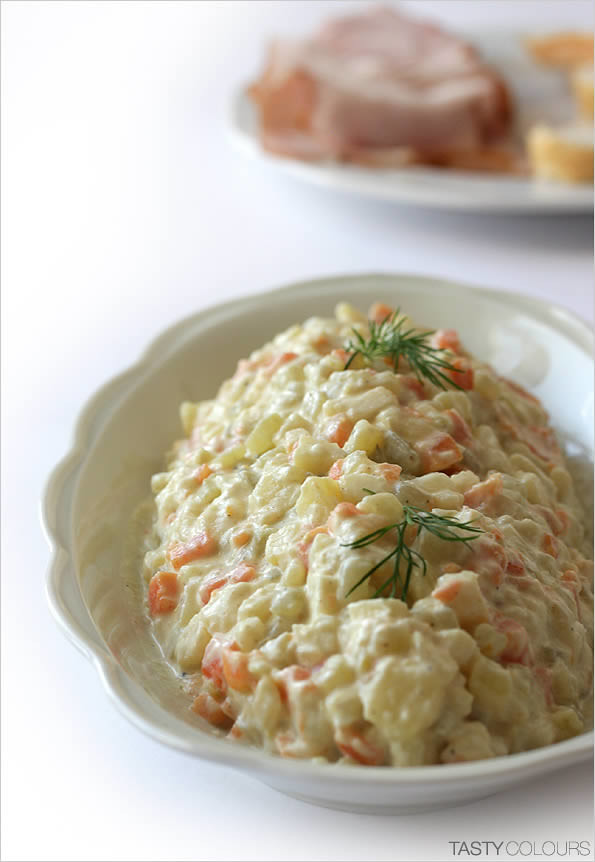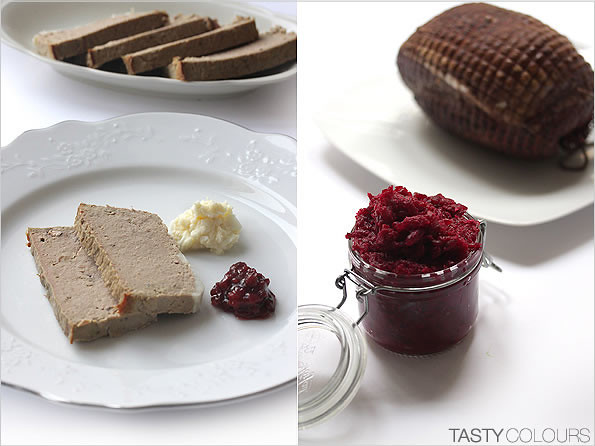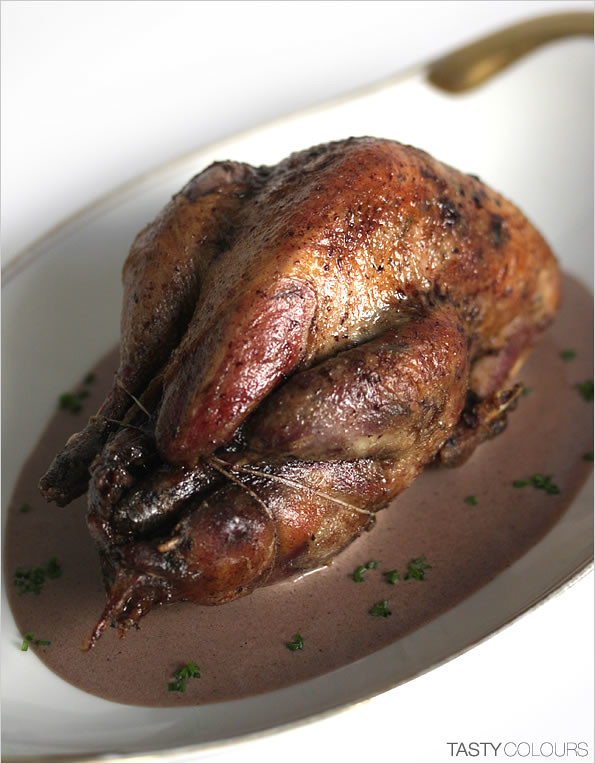This
vegetable salad is a traditional Polish accompaniment. I
suppose that it is made in nearly every Polish home at least twice
per year. Also in my family, everybody cooks and chops root
vegetables before Christmas Eve and Easter. My grandma Pola, who now
is 86 years old, and always was an excellent cook, used to serve it
for other occasions like, for example, her name day (“imieniny”),
which, in Poland, used to be more popular than birthdays. When I was 3 years old, my parents took me to my grandma's to celebrate her name
day. I wanted to help her and I offered to carry a large glass bowl
containing the salad from the kitchen to the dining room.
Unfortunately, the floor was polished and slippery, so I fell on the
floor. I do not have to mention that the bowl broke and the salad was
everywhere, except on the serving table. Anyway for me, at that time,
it was not a big loss as I hated this vegetable salad. I do not
remember at what age I realized that it is edible. I like to eat it
nowadays but my favorite recipe is this one of my mother. Usually
this vegetable salad contains mayonnaise and canned peas which I
hate. My mum does not add any non edible canned peas nor mayonnaise;
instead she prepares a simple dressing based on sour cream, mustard,
hard boiled egg yolks and lemon juice. In my opinion such a salad is
lighter, more delicate and tastier. Do not spoil the salad with
overcooked canned peas! It is a matter of individual taste of course, but in
my opinion the idea of this salad is to serve root, winter
vegetables; canned peas are summer vegetables and do not have their
place here. Some people make variations by adding cooked corn (which
is wrong), or pickled bell peppers which is also wrong. Do not add
raw chopped onion into it as some people do, because the whole salad
will stink on the next day. Besides the taste will be too rough. I
like it when the taste of sweet root vegetables like carrots, parsley
and celery does not dominate and that is why I counterbalance the
taste with acid ingredients such as (quite
a lot of) sour cucumbers (gherkins) and
sour apples (Polish russet apple – “szara reneta”). To summarize - as many households, as many recipes for the salad.
Serves
4
Ingredients:
2
medium root parsley or parsnip, peeled and washed
2
medium carrot, peeled and washed
¼
medium celery root, peeled and washed
4-5
medium potatoes, washed but not peeled
350
g sour cucumbers, peeled
1
hard boiled egg
1 sour apple
2
tablespoons mustard
200
ml crème fraiche or heavy cream
1
tablespoon lemon juice
salt
pepper
Cook
vegetables: Put root parsley, carrots and celery root in boiling
water and cook until soft but not overcooked. Strain vegetables and
let them cool down. In the meantime, cook potatoes. Strain them and
let them cool down completely.
Dice
vegetables: Dice vegetables, potatoes and apple into
small cubes – around 0,5 cm. Place them in a bowl. Chop cucumbers
into cubes of the same size as the
vegetables. Put into the salad bowl and mix everything
thoroughly. The salad itself should be a bit sour. If necessary, add
a bit of lemon juice or one more cucumber. Peel the egg. Separate the
yolk from the white. Chop finely the egg white and add to the salad.
Mix well.
Prepare
the dressing: In a bowl or a mortar mash well the egg yolk. Add
mustard, mix well. Add cream, salt and pepper generously, mix, taste,
and pour into salad. Mix well. The salad should be quite moist.
Place into the
fridge for at least one hour.
Serve
as an accompaniment to cold meats, pâtés,
hams, herrings and marinated mushrooms.















